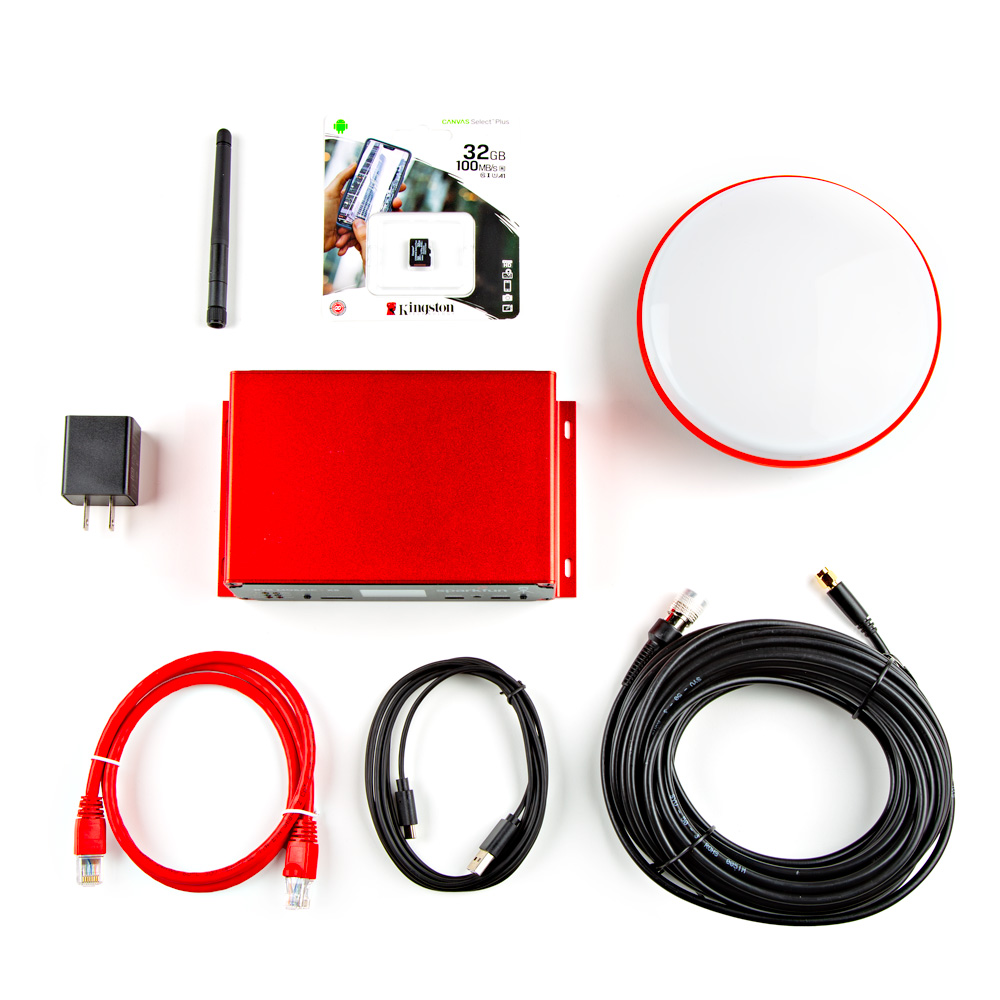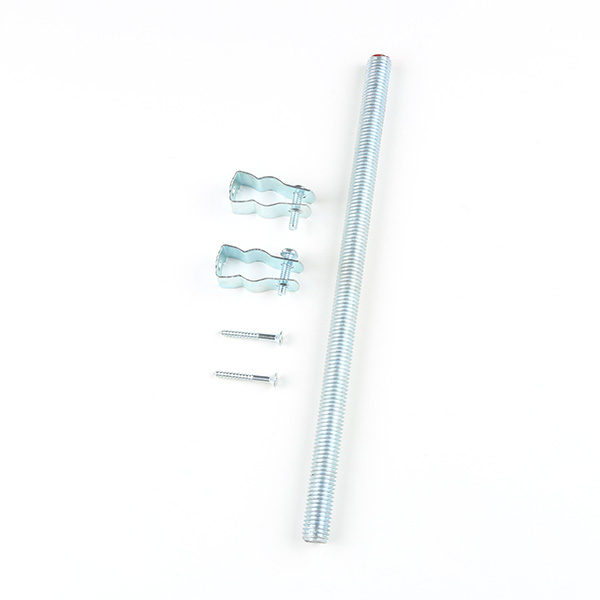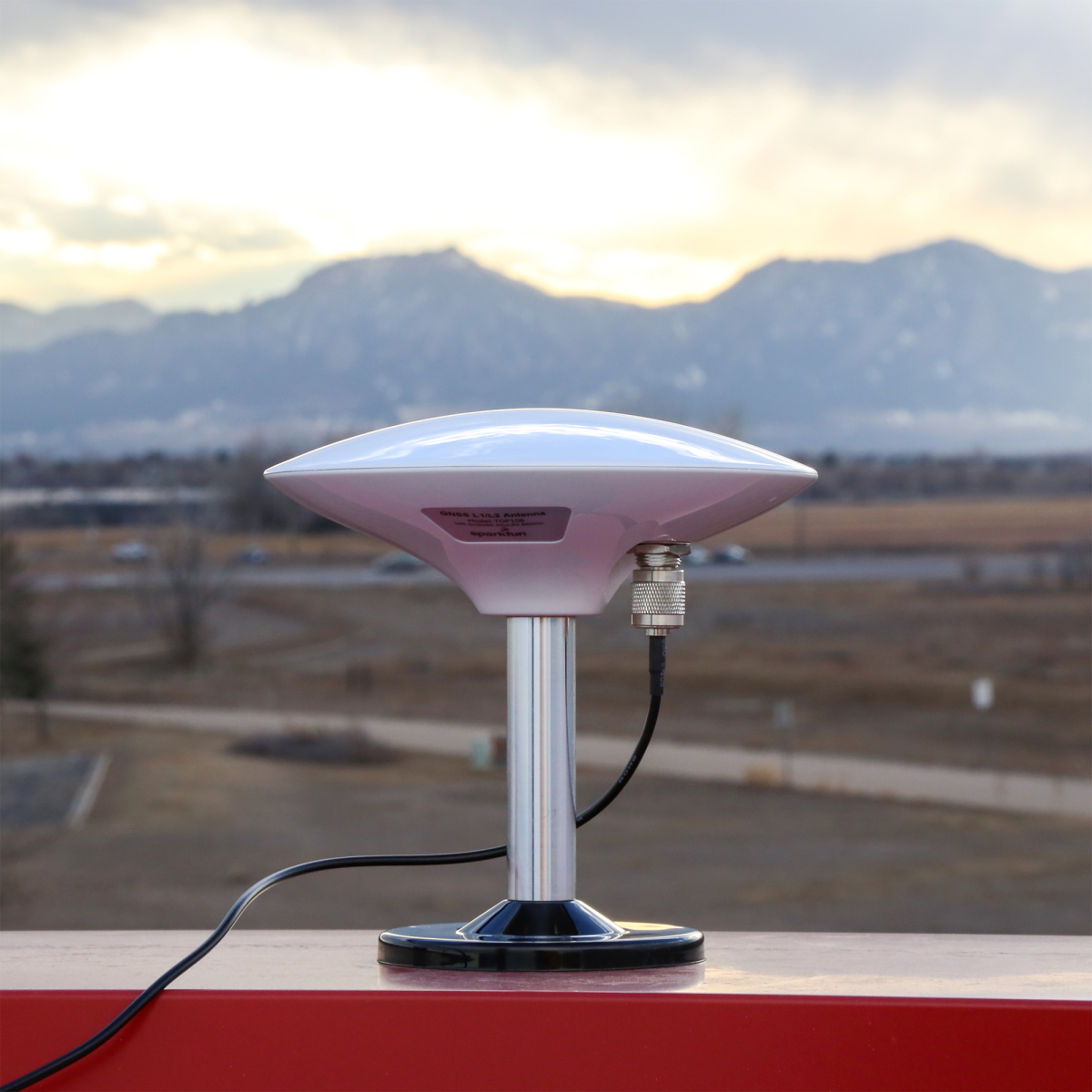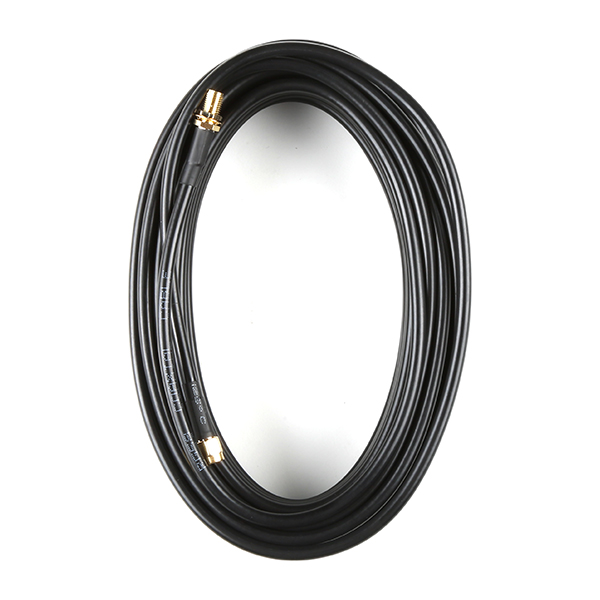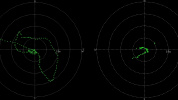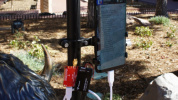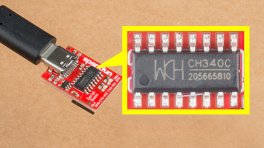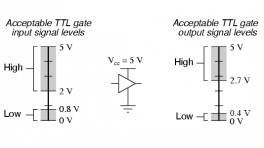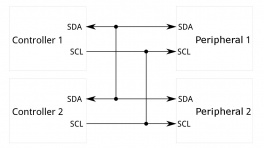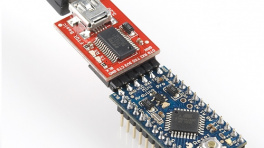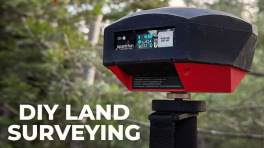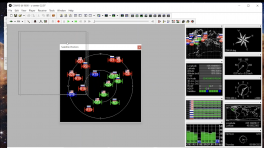Introduction
-
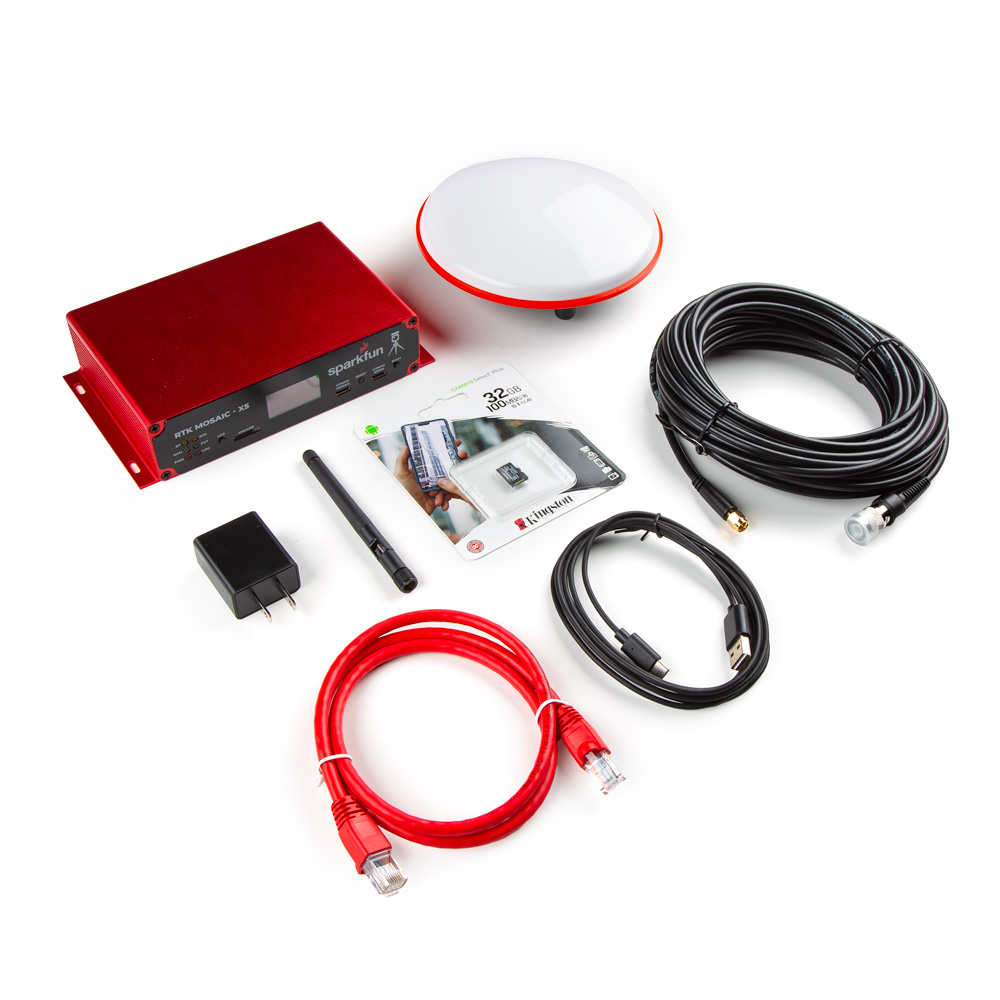
 Purchase from SparkFun
Purchase from SparkFun
-
Designed and manufactured in Boulder, Colorado, USA, the SparkFun RTK mosaic-X5 is the perfect solution for your high-precision positioning and navigation needs. Based around the multi-constellation, multi-frequency, L5-ready mosaic-X5 from Septentrio, this is our most advanced RTK product to date. It supports GNSS signals from GPS (USA), GLONASS (Russia), Beidou (China), Galileo (Europe), Navic (India) plus special additional satellites (e.g. SBAS and QZSS). The mosaic-X5 also has built-in on-module support for other L-band correction services.
The RTK mosaic-X5 can be configured as a Real-Time Kinematic (RTK) Base, where it feeds corrections to other RTK Rovers, or as an RTK Rover where it can use corrections to achieve a horizontal positioning accuracy of 6 millimeters (0.6cm) (plus 0.5 PPM). For applications like robotics and autonomous systems, the mosaic-X5 can deliver position updates at 100Hz (100 times per second). The mosaic-X5 is a very sophisticated chip running a full internal web page server; the position can be monitored and the module is fully configured through that web page using a standard browser.
Under the hood, the RTK mosaic-X5 is powered by the mosaic-X5 GNSS module from Septentrio; and the Espressif ESP32-WROVER processor (16MB flash, 8MB PSRAM). The mosaic-X5 has USB-C connectivity (with Ethernet-over-USB), multiple UARTs and supports full Ethernet connectivity. The only interface it doesn't offer is WiFi and that's why we've included the ESP32 with its own Ethernet connection. You can connect the mosaic-X5 directly to your Ethernet network - our product supports Power-over-Ethernet too. Or you can link the mosaic-X5 Ethernet port to the ESP32 Ethernet port and have the ESP32 provide WiFi connectivity. In that mode, the ESP32 becomes an Ethernet to WiFi Bridge, seamlessly passing WiFi traffic to and from the mosaic-X5 via Ethernet.
Product Comparison
Below is a simple comparison table between our breakout board and Septentrio's development and evaluation kits:
mosaic-X5 Development Kit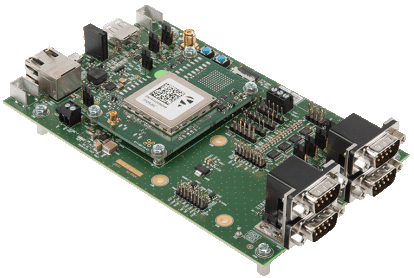
|
mosaic-go Evaluation Kit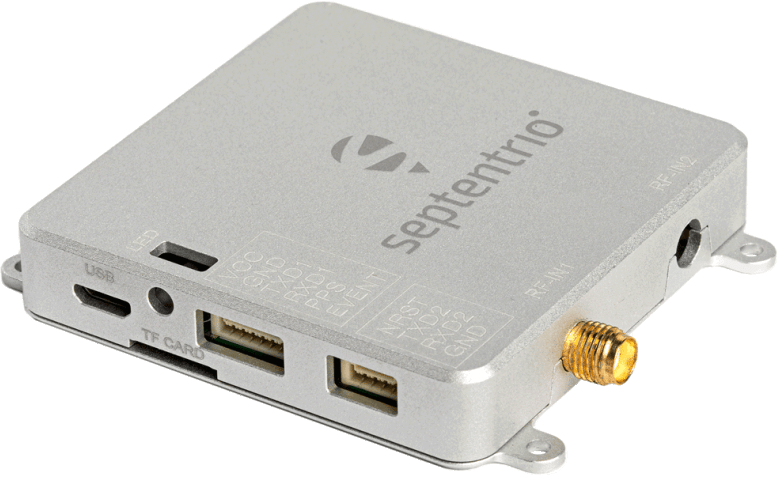
|
mosaic-X5 GNSS Breakout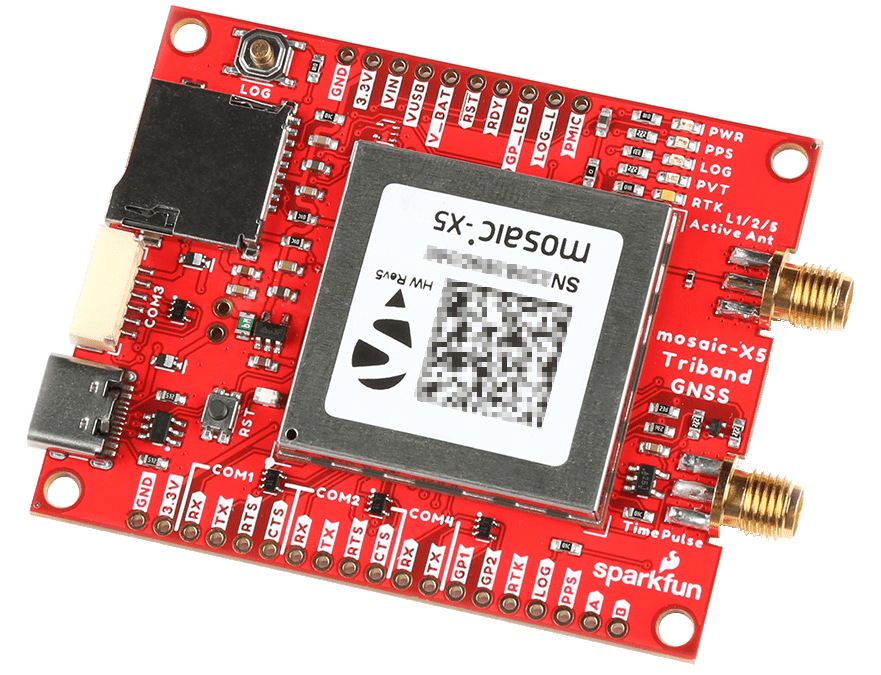
|
RTK mosaic-X5
|
|
|---|---|---|---|---|
| GNSS Antenna | Dual |
Single (mosaic-X5) Dual (mosaic-H) |
Single | Single |
| USB Connector | micro-B | micro-B | Type-C | Type-C |
| Ethernet |
Yes 10/100 Base-T |
No | No |
Yes 10/100 Base-T |
| WiFi | No | No | No |
Yes - Network Bridge 10 Base-T |
| COM Ports | 4 | 2 | 4 |
1 - mosaic-X5 1 - ESP32 |
| µSD Card Slot | Yes | Yes | Yes | Yes |
| Reset/Log Buttons | Yes | No* | Yes | Yes |
| Logic-Level |
1.8V 3.3V |
3.3V | 3.3V |
3.3V 5V |
| PPS Signal | Header Pin | 6-Pin JST Connector | SMA Connector | Screw Terminal |
| Enclosure Material | N/A | Metal | N/A | Aluminum |
| Dimensions | N/A | 71 x 59 x 12mm ± 1mm | 70.9 x 50.8 x 8mm |
180.6 x 101.8 x 41mm Enclosure Only |
| Weight | N/A | 58g ± 1g | 22.6g |
415.15g Enclosure Only |
mosaic-go Evaluation Kit
The reset pin is exposed on 4-pin JST connector and the log pin is connected to the latch pin of the SD card slot.
Required Materials
The RTK mosaic-X5 comes with everything you need to get up and running.
Kit Contents
- The linked product does not include the front/rear panels and stickers from the RTK mosaic-X5.
Mounting Hardware
This kit does not include any mounting hardware for the antenna. If you wish to permanently mount the antenna outside, we recommend the following products:
Extension Cables
Your RTK mosaic-X5 is equally at home on your desk, lab bench or in a server rack. But you're still going to want to put the GNSS antenna outdoors, so it will have the best view of the sky. Some extra SMA extension cables may be useful and we have good quality low-loss RG58 cables available in the store. The GNSS SMA antenna connection is standard polarity. If you want to extend the ESP32 WiFi / BT antenna connection too, you need a Reverse Polarity (RP) cable for that.
-
Interface Cable - SMA Female to SMA Male (10m, RG58)
CAB-21281Tip
Use this extension cable for the GNSS antenna. This cable will not work with the WiFi/BLE antenna due to the polarity of the connectors.
-
Interface Cable - RP-SMA Male to RP-SMA Female (10M, RG58)
CAB-22038Tip
Use this extension cable for the WiFi/BLE antenna. This cable will not work with the GNSS antenna due to the polarity of the connectors.
Selecting an Outdoor Enclosure
The RTK mosaic-X5 comes in a beautiful custom extruded aluminum enclosure, with machined end panels and matching stickers. The slotted flanges make it easy to install and secure the enclosure in many locations. But the enclosure only provides limited protection against the ingress of dust and water; it is IP42. So, if you are going to permanently install it up on the roof too, you're going to need a suitable weatherproof box. We found a good one - the Orbit 57095 - also available from Amazon - back when we put together our very first DIY GNSS Reference Station.
AC Not Required!
The Orbit enclosure comes with a built-in power outlet, but you don't need it! The RTK mosaic-X5 can be powered by Power-over-Ethernet (PoE), meaning all you really need to run up to the roof is a standard 8-core CAT-6 Ethernet cable. Choose a PoE Ethernet Switch that meets your needs. We have had good experiences with the TP-Link TL-SG1005P - available from many retailers including Amazon.
Suggested Reading
As a more sophisticated product, we will skip over the more fundamental tutorials (i.e. Ohm's Law and What is Electricity?). However, below are a few tutorials that may help users familiarize themselves with various aspects of the board.
-
GPS Basics
-
What is GPS RTK?
-
Setting up a Rover Base RTK System
-
How to Build a DIY GNSS Reference Station
-
mosaic-X5 GNSS Breakout Board Hookup Guide
-
Qwiic OLED 1.3" Hookup Guide
-
How to Install CH340 Drivers
-
Serial Terminal Basics
-
Logic Levels
-
I2C
-
Serial Communication
-
How to Work with Jumper Pads and PCB Traces
